Welcome to one of my monthly wrap-up posts, where I briefly review everything I read! I read widely across many genres, from classics to literary to speculative fiction. With these I’m hoping to shed some light on backlist gems, perhaps push you to read outside your genre comfort zone, and also highlight which new releases are worth your time.
Earlier this week I covered my reading of the Ursula K. Le Guin Fiction Prize shortlist, many of which I did read in November. But I managed to squeeze in a few other books as well.
2666 by Roberto Bolaño (2004)
I admit I read this over the course of several months, otherwise that would have been quite a lot of pages for November.
Where does one begin with this vast, complex book? It’s split into five volumes, which Bolaño originally requested to be published separately. He was nearing the end of his life whilst writing this and it’s said he hoped the sales of each volume might help support his family after his passing. However, it was decided after his death that it should be published as a singular whole novel, and I’m glad his estate made that decision. I think it makes much more sense of the parts even if they are still rather distinct from one another.
The first part concerns four critics who have dedicated their academic careers to the mysterious figure of Benno von Archimboldi, a German author who is notoriously secretive. They chase his legend to the northern Mexican town of Santa Teresa, and there they wait for sign of him. The second volume is the shortest, following Chilean academic Óscar Amalfitano who lives with his daughter in Santa Teresa and feels like he is losing his grip on reality. For you see, Santa Teresa is experiencing a spate of femicides; body after body is turning up on the edges of town (inspired by real events in Ciudad Juárez). This looming threat begins to gnaw away at the edges of Amalfitano’s consciousness.
The third section concerns a Black journalist named Oscar Fate from New York. He is sent to Santa Teresa to cover a boxing match there, even though he is generally a features writer. Once there, he becomes embroiled in the strange nightlife of the city. The fourth section is the most notorious, finally giving us a seemingly endless account of the murders of Santa Teresa’s women, and it makes for brutal reading. The police appear to be helpless in the face of the onslaught, though they do finally arrest one German man, Klaus Haas. Finally, finally, in the last section we meet Benno von Archimboldi and get an overview of his life; growing up in Prussia, fighting on the Eastern Front in World War II, and ultimately transitioning into a much-admired author with a cult following.
This is not a book to read if you want answers. How the volumes fit together is not always that obvious; in fact, I think my synopsis gives a sense of cohesion that isn’t entirely reflected in the text. Santa Teresa is a focal point (and the novel needs it), but it is also sometimes just a backdrop to the other dramas unfolding.
One of the major themes of the novel is the difficulty, perhaps impossibility, of conveying the horror that is mass murder in literature, whether it be of the women of Santa Teresa or Jewish people in World War II. These murders are on the one hand the responsibility of some individual somewhere (an intimate partner, a serial killer, a German bureaucrat), but also of society collectively (misogyny, fascism, the ease with which we look away). Bolaño seems to be asking, can I depict this? And how can I? Whether mimesis reenacts the violence of the assault, and whether you get a sense of the humanity of the women of part four, I don’t know. I’m not sure Bolaño doesn’t also want us to ask ourselves this question.
Overall I was impressed by this. I liked its almost flat, direct style, especially when married with the more Borges-inspired surrealities of the text and other tonal shifts. I appreciated its scope and ambition, and I felt engaged with the book throughout pretty much all the parts, which is a difficult thing to sustain through such a weighty and otherwise disjointed tome. I appreciated the academic satire of part one, the strange shifting ground of parts two and three, the reveals of parts four and five. It reminded me of other big postmodern texts from the second half of the twentieth century, and I wonder if this wasn’t one of the last books of this kind published in 2004. I recommend it (though be warned about those harrowing sections), and look forward to reading more Bolaño. Please do let me know your favourites in the comments; I didn’t realise he’d published so much until recently, only ever really hearing about this and The Savage Detectives.1
A Tale of Two Cities by Charles Dickens (1859)
I re-read this one for November’s book club, and had a great time with it, as I almost always do with Dickens. In it, we move back and forth between Paris and London during the time of the French Revolution. Doctor Manette has been retrieved from a long stint in a French prison for an unknown crime, reunited with his daughter and safely ensconced in a leafy London suburb. Only his past will continue to haunt him, especially in the form of the husband his daughter chooses.
It is noticeably different from some of his other novels. Obviously, it’s a historical novel, of which he wrote one other, Barnaby Rudge (one I haven’t read yet). It zooms in and out from some of the most famous scenes of the Revolution—like the storming of the Bastille—to quieter, more intimate moments. The balance between the two is really smoothly done, and one can see how and why the personal informs the political throughout.
Perhaps because of the influence of books like Thomas Carlyle’s The French Revolution, at times the sentence structure felt more impenetrable than usual, particularly toward the beginning of the novel. Usually I find Dickens to be a very smooth read. But maybe most strikingly, it is by far the tautest novel that I’ve read of his. Unlike some of his other plots (looking at you, Little Dorrit), not only does it draw together in a whole and complete fashion at the end, but practically every scene and chapter advances it. However, this comes at the expense I think of some of the lighter elements of Dickens’ work, and perhaps as a historical novel, this makes a lot of sense. There are fewer comedic characters and scenes, and in general our protagonists are even more like symbols instead of people than usual; the couple at the centre of the story are nothing special. I did appreciate the inclusion of figures like Mr Lorry, Miss Pross and Jerry Cruncher of course, but in another Dickens we’d probably have had a lot more of them.
But oh, the ending. I remembered the ending from last time (which must be about ten years ago now) and I’m sure I’ll think about it again until my next read. Because of the excellent plotting, by the time you reach the end there is a real emotional climax. In conclusion, this book is wholeheartedly on my recommended Dickens list. I don’t think I would start here, but I think it’s both a great read and an interesting one to compare to his other books.
Absolution by Jeff VanderMeer (and Annihilation/Authority/Acceptance) (2024/2014)
One of my most anticipated novels of the year was, of course, this newest Southern Reach novel. And I am so grateful that I got to interview Jeff about this last week.2 He is one of my favourite authors; I find his work to be consistently fascinating and surprising, and Southern Reach is some of his best. Naturally, as I loved the original trilogy so much, I was apprehensive about this newest surprise volume, but I’m glad to say I think it’s a worthy addition.3
It is nominally a prequel (with little sequel hints) but I would definitely still read the series in publishing order. It follows a fairly tangential character from the third book, Old Jim, who, it turns out, was a Central operative and plant on the Forgotten Coast before the formation of Area X there. The book is split into three parts; in the first Old Jim goes through the files reporting an expedition of biologists who visited the area twenty years before the border came down. Of course, strange things were happening even then. In the second we follow Old Jim in the weeks leading up to the formation of Area X proper, as he tries to find out both what happened to the previous expedition and what on earth is going on down there in general. Finally, we follow another character from the first books, Lowry, on the first ever expedition into Area X, of which he was the only survivor. This is the most controversial section, as it features an inordinate amount of swearing.
I just really enjoyed this book. I liked the matter-of-fact opening section which read a little like a detective novel, moving finally into a moment of ecstatic surrealism. I liked the tenderness and pain at the heart of Old Jim’s section in the middle. And I liked the absolute chaos and deep weirdness of Lowry’s part. I’ll never miss an opportunity to step into Area X. I’ve read a lot of VanderMeer now (I have in fact completed all of his published novels) so I feel like I have a good idea of what to expect from him, and it’s true that I don’t think his writing is for everyone. It is deliberately frustrating at times, obscure, strange. At other times, though, it is poetic and beautiful just when you least expect it; something I was struck by time and time again as I read this.
One of the wonderful things about reading a lot of work by one author is that you get such a good feel for their authorial voice and the way their mind works as they write. I really appreciate having that with VanderMeer, and I think it deepens my interactions with his books as a whole. I think he has a really unique talent at grasping true strangeness and imbuing a text with horror. I’ve talked a lot recently about not being that scared by horror fiction, but perhaps it’s just because I’ve read so much VanderMeer; he is a master at that existential uncanny.
As you can see, I did go back and read the first three books after my reading of Absolution in possibly my most speediest reading mode ever. I think I started Annihilation on Sunday night and finished Acceptance around midday on Tuesday (in amongst, you know, being a mother, and eating/peeing/sleeping). I really enjoyed thoroughly immersing myself in this whole world again, and I had a new appreciation for both Authority and Acceptance, both of which I had less recollection of than the infamous Annihilation. I think it was a rewarding way to think through Absolution, also, and I look forward to rereading the fourth novel at some point now that I’ve renewed my knowledge of what came before.
Morning and Evening by Jon Fosse trans. by Damion Searls (2000)
This brief novella opens on the birthday of protagonist Johannes. We are in the perspective of his father, who hovers outside the room his wife is labouring in. Once he has come safely into the world, the narrative shifts to the day of Johannes’ death. His wife and best friend have gone before him, and he wakes and starts his daily routine only to find everything is slightly off, particularly when he finds said best friend waiting for him on the dock. In this small Norwegian fishing village, we encounter our main character at these two key junctures, and feel deeply the brevity and miracle of any life.
This book has very few full stops and an iterative, gentle style. By staying focussed on the simplicity of Johannes’ final moments—and utilising a careful hand with scene-setting—Fosse manages to keep the book just grounded enough to feel like it isn’t just a stream of words on the page. I found the ending to be particularly moving, and I think it will be the thing I take with me from this book moving forward. It’s worth reading the book for that alone, I think, as long as you can find the rhythm of what comes before.4 I definitely felt Fosse had a gift for writing transportive atmosphere here, and I look forward to reading more of his work.
Saga, Vol 1. by Brian Vaughan and Fiona Staples (2012)
I hope moving forward that I’ll be incorporating more graphic novels into my monthly reading. I started with this and got it out at the library as I know the series as a whole is much loved. Whilst I liked it—many of the illustrations are great and it had its funny and/or tender moments—it didn’t blow me away. It’s an epic space opera style series about two people from otherwise warring races. They’ve fallen in love and had a baby, and pissed off a lot of people in the process. Does exactly the job that it should but perhaps not my kind of thing, or at least I’m not intrigued enough to continue at this point. I look forward to finding out what I do and don’t like in graphic novels though, as it’s an intriguing art from all of its own.
With that, I shall leave you! I’m so looking forward to my December reading, I have a great line up of books I haven’t been able to get to whilst I’ve been doing my big reading projects. I look forward to sinking into them as we settle into the final parts of the year.
I also have very exciting ideas for this space for the new year… stay tuned as I now have time to start putting it all together! Newsletters to follow again, too.
This month in book club we’ll be reading Pale Fire by Vladimir Nabokov, and will be meeting on Sunday 29th December to discuss. Here are some more details if you are interested.
If you are interested, I did write posts for each section of the book over in book club with some more detailed thoughts and themes as I read it, available on tiers 2 and 3 and also as a standalone.
If you’d like to watch this back, the link is in the chat for paid subscribers of this here Substack (as well as over on book club), or you can use this link to access it as a standalone.
Here is a link to my review of Annihilation when I reread it last year, if you want to familiarise yourself with the premise of the trilogy.
I have been loving listening to a book as I read at the moment, I think it helps with prose styles like this one to find the rhythm and keep me focussed, which is key to the success of any reading.



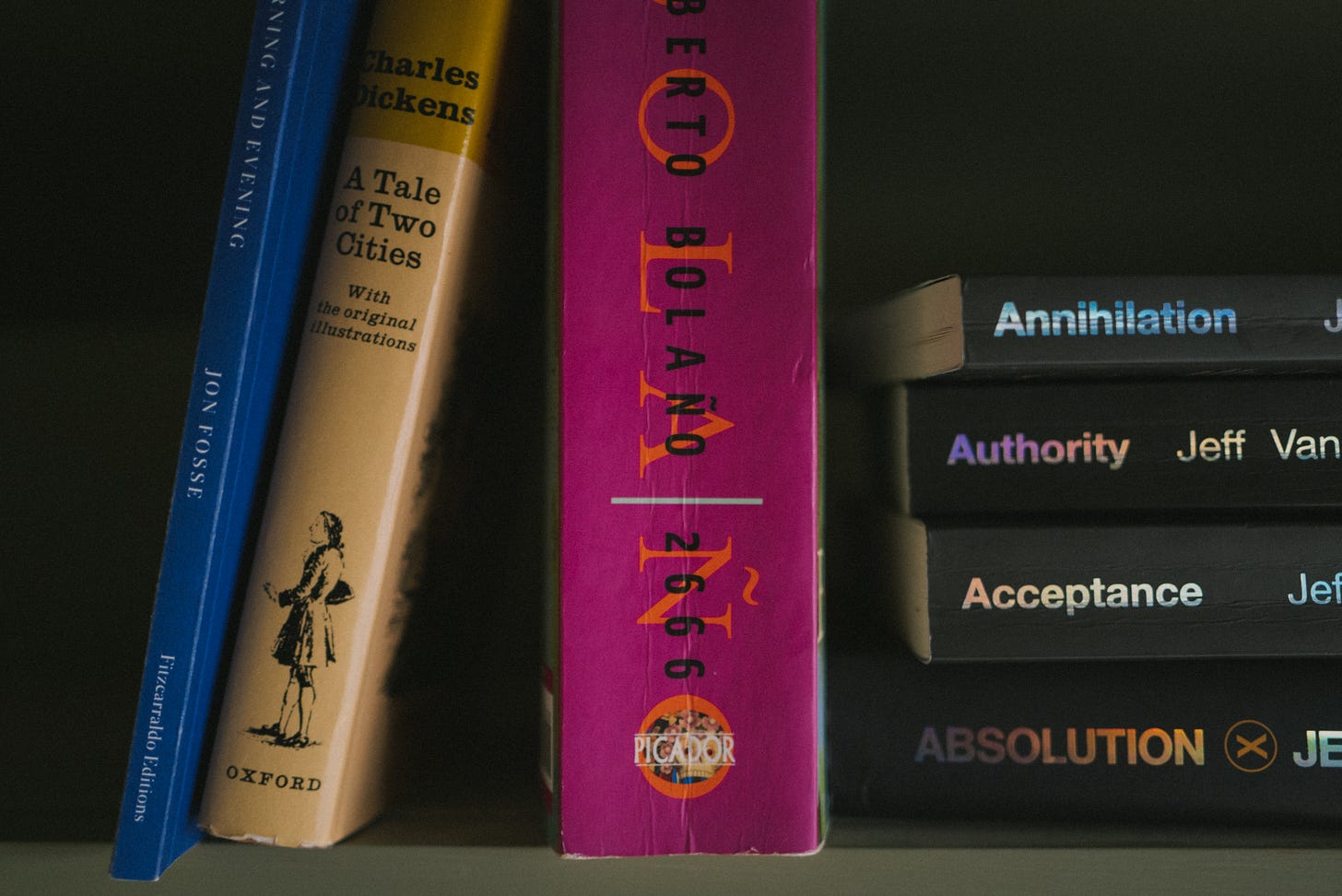
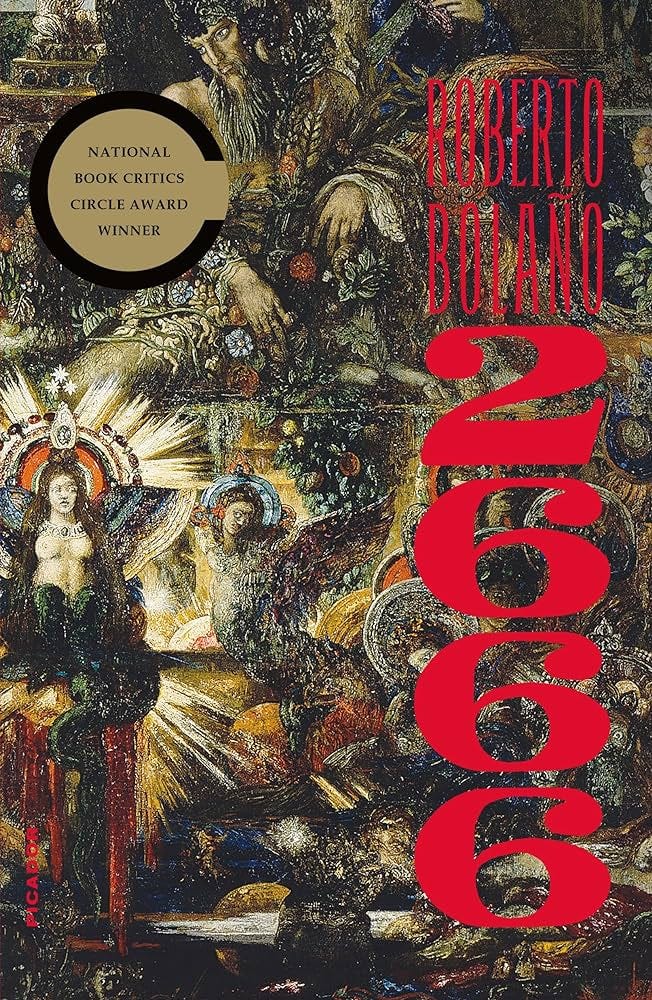
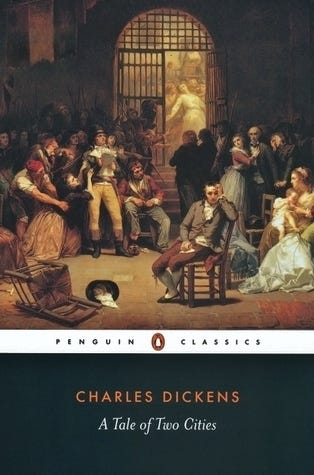
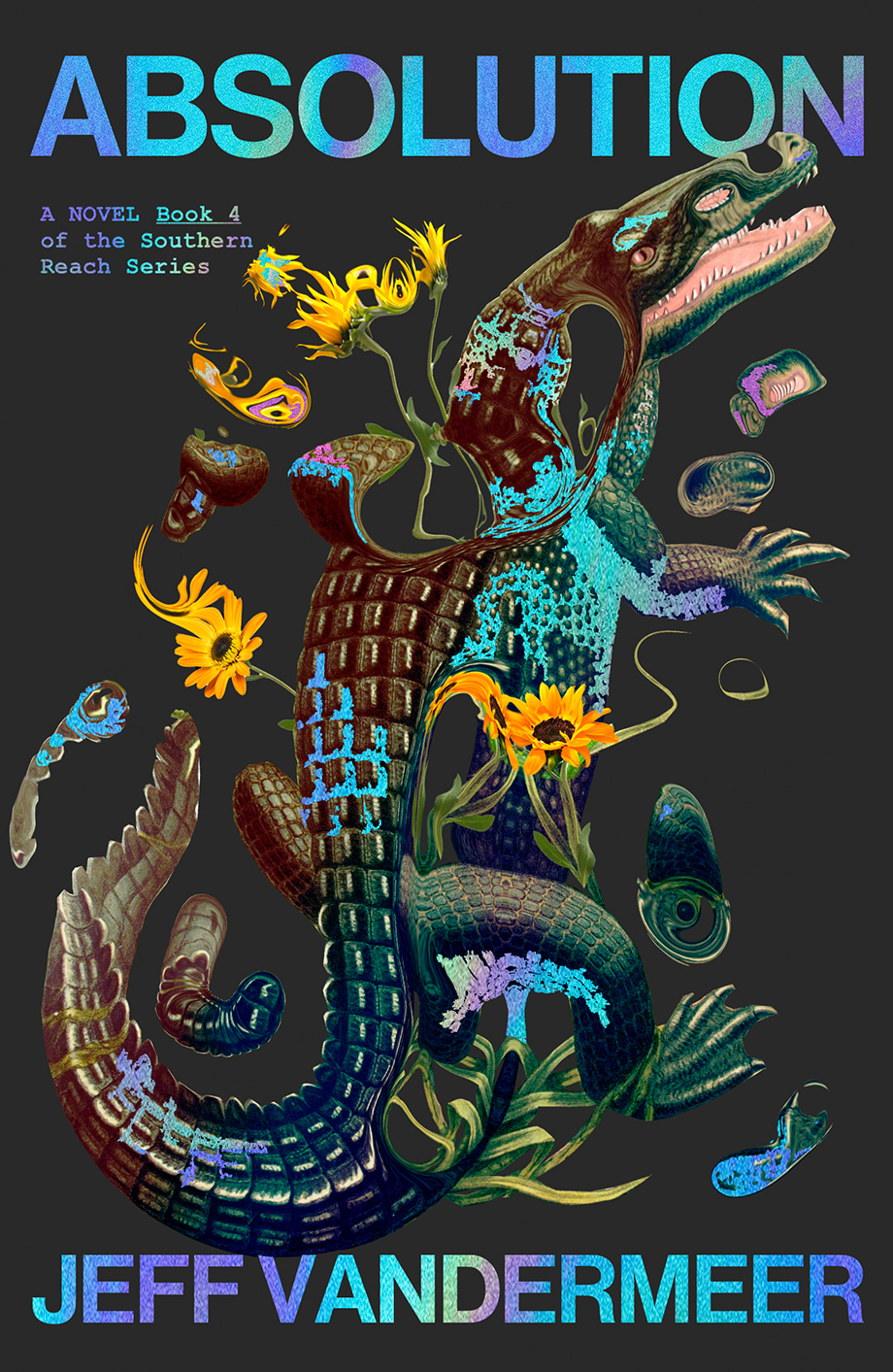
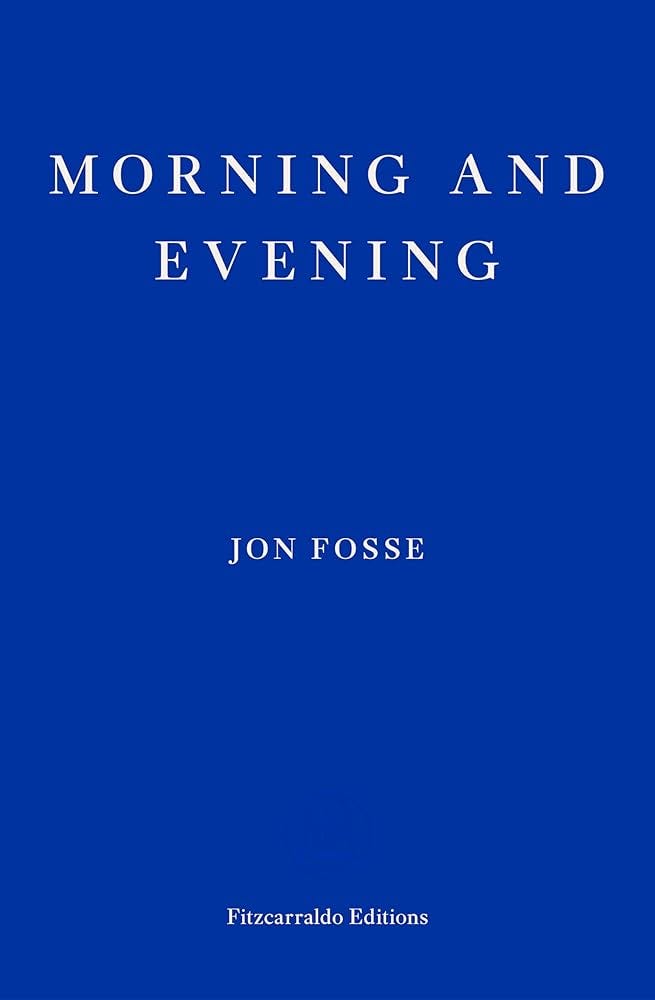
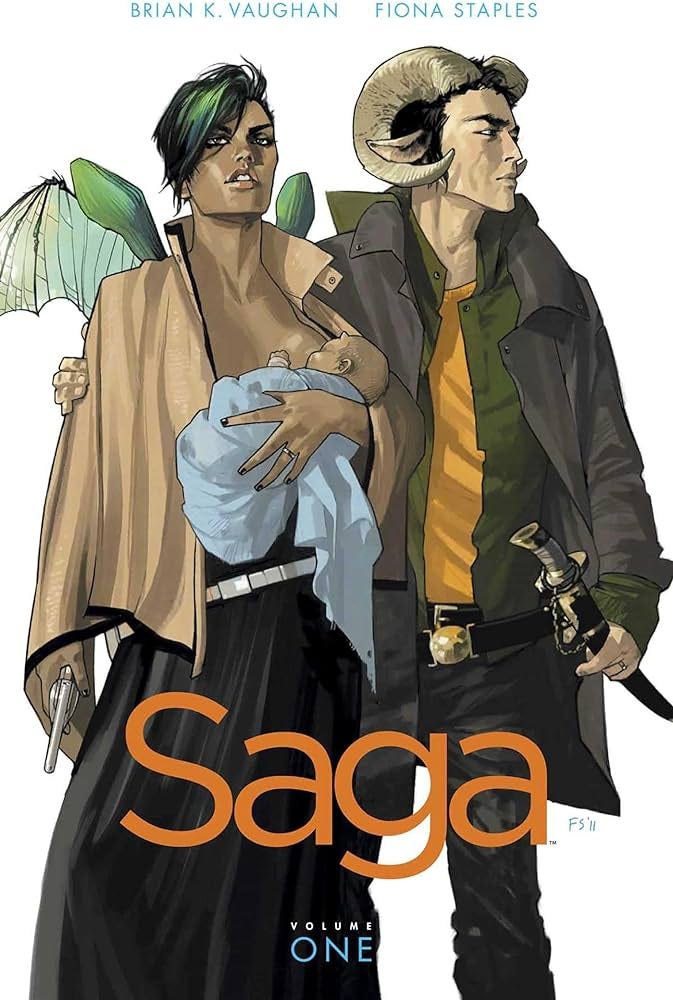
I have been wanting to hear/read someone's honest thoughts on 2666. I have been wanting to read it for so long but have been intimidated by the volume of it. I am glad I saw this post/article. The way you dissected the volumes really has me intrigued and wanting to dedicate my time to this book.
Finally getting round to this! I laughed at your suggestion that your review of 2666 is maybe more cohesive than the plot itself - I really enjoyed reading it though! I have never read any Bolaño but I do have The Savage Detectives on my shelf to get to soon. I have previously been a bit wary of 2666 because of the length, but idk this review is making me rethink! It seems to cover a lot of themes I generally always enjoy so, I think after The Savage Detectives, I’ll give it a go! A book friend recently recommended ‘By Night in Chile’ by Bolaño if you’re interested (I can’t back up that rec yet but, I trust the person who gave it to me!)
I think I’m going to add Mornings & Evenings to the tbr. Fosse’s writing is quite hard (I thought) bc of the lack of full stops and sort of general direction but I did find A Shining to be so transportive - I found it fascinating. I think I said in my review that I recommended it to be read on the art of writing. I’m always more onboard for stream of word writing in a novella - if it’s any longer than that I get burnt out by the style pretty quick.
Can’t wait to see what’s to come for End Matters next year! Have a lovely Christmas Jess xxx